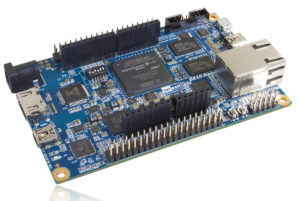SecureRF's Security Toolkit for Intel's DE10-Nano

Intel DE10-Nano development board
Intel FPGA-SoC devices are well suited for a wide variety of Internet of Things (IoT) applications, including acting as an IoT gateway that can authenticate and control hundreds or thousands of remote endpoints. Developers using Intel’s DE10-Nano kit, which is based on a Cyclone V FPGA, can now implement SecureRF’s DE10-Nano Security Toolkit to protect applications without compromising computing and memory resources. SecureRF’s fast, ultra-low-energy, small-footprint security solutions provide strong authentication, data protection, and non-repudiation for FPGA-based devices and connected endpoints (e.g., 8- and 16-bit sensors) that do not have the resources to incorporate security solutions like ECC.
Authenticating and securing IoT devices requires computationally intensive cryptographic operations. Intel FPGA-SoC devices are ideal for such applications because they can perform the most demanding operations in hardware, within the FPGA fabric, thereby expediting results and offloading the HPS for other tasks. The problem is that legacy security methods such as ECC are computationally expensive and will not work on the low-resource devices (e.g., 8-bit microcontrollers) that the FPGA gateway may need to communicate with. SecureRF’s public-key security methods, which include Ironwood Key Agreement Protocol (Ironwood KAP) and Walnut Digital Signature Algorithm (WalnutDSA), solve this problem. They are at least 60 times faster than ECC and consume up to 140 times less energy. These methods are also quantum-resistant to known attacks and will protect IoT devices even when quantum computers become available and render RSA and ECC obsolete.
To start working with the DE10-Nano and SecureRF’s security solutions, developers can go to our Security Toolkit webpage and download the DE10-Nano SD card image. SecureRF provides a DE10-Nano FPGA board image that includes the WalnutDSA Digital Signature Verification Algorithm and Ironwood Key Agreement Protocol. The latter enables two endpoints to generate a shared secret over an open channel, while WalnutDSA allows one device to generate a document that is verified by another. Both are implemented partially in software on the Intel Cyclone V’s ARM Cortex-A9, and partially in FPGA fabric. The FPGA image is configured to run WalnutDSA together with Ironwood KAP as a demo. The SD card also comes with three separate demos to help demonstrate the operation of the signature algorithm and the key agreement protocol. One demo showcases the basic operation of WalnutDSA and Ironwood KAP. The second demo shows Ironwood KAP’s speed in hardware and software. The third demo reproduces a real-world application that involves authenticating a remote IoT device.
Visit SecureRF’s DE10-Nano Developer Resources page to download the SD card image containing demo code and the necessary hardware IP cores. Additional documentation is available at the Intel Developer Zone.
